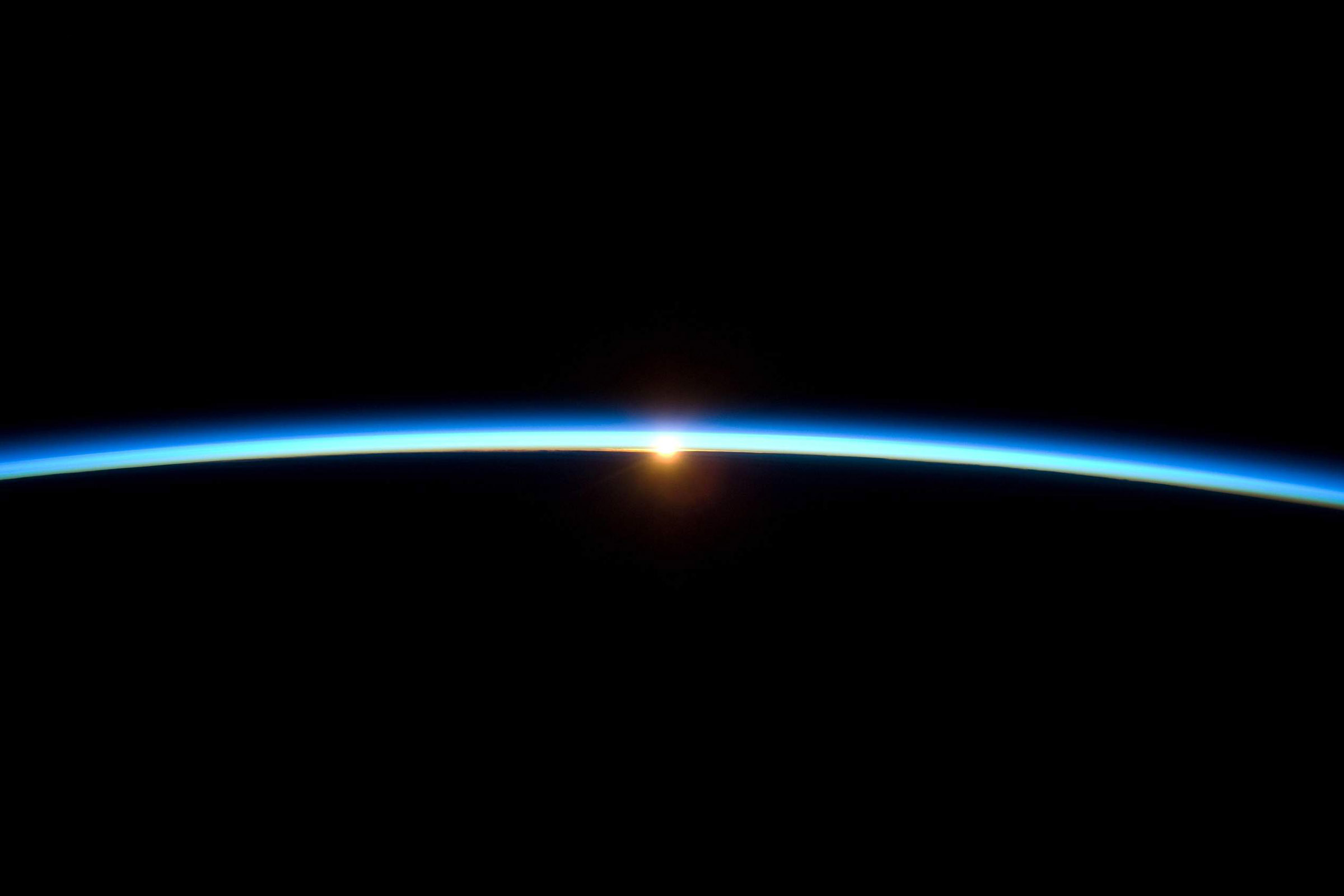I first met Piers Sellers because he’s dying.
Sellers, a former astronaut, leads the government’s efforts to understand climate change. At NASA’s Goddard Space Flight Center, he heads the Earth Sciences Division, which does some of the nation’s most important climate change modeling.
LISTEN: “The Thin Blue Ribbon”
I visited with him in his first-floor office. At 61, he’s a swoon-worthy handsome man. He’s 6 feet tall, with an open face and mischievous smile. When I met him, he looked thinner than his photos from his days as an astronaut. His white dress shirt draped loosely on his shoulders as if it was a size too big. He told me he’d lost 30 pounds in three weeks, a result of some drugs he’s taking.
Honestly, I don’t think that Sellers would like me mentioning this all here—at the beginning of his story. He doesn’t like talking about his health. At one point when I asked him about his diagnosis, Stage 4 pancreatic cancer, he laughed. “I’m still alive, man,” he told me. “And I’m always optimistic.”
I’ll return to his optimism in a bit. But let me begin by telling you his story. That way I think you’ll understand why I visited Sellers in the first place.

Former astronaut Piers Sellers. Photo: Lucian Perkins / WBEZ
Piers Sellers grew up in England, and as a young boy, he yearned to go into space. By his own admission, he was a bit of a “space nut.” He followed the Gemini and Apollo missions, and remembers at the age of 14, staying up until 4 a.m. at boarding school to watch the moon landing. He thought to himself, “Oooh, I want to do that.” He came to the U.S. to do post-doc work, and took a job at NASA’s Goddard Earth Sciences Division as a climate scientist. In 1991, at the age of 36, he became a U.S. citizen so he could apply for the astronaut corps. Five years later, he got selected to become an astronaut.
As you might imagine, he gets asked all the time about his time in space. So when I asked him about that first flight aboard the space shuttle Atlantis, he wanted to make sure that I knew he “didn’t have a religious epiphany.” I learned quickly he’s no-nonsense—a scientist who’s grounded in what he knows to be true. But he did tell me that on that first flight, right after the launch when he looked out the window, what he saw left him in awe—the equivalent, I suppose, of a scientific epiphany.
“You get up there, and the Earth is this huge ball,” he told me. “And when you look at the horizon, there’s this tiny film of gas around it. It’s just a thin, blue ribbon. It’s the atmosphere. I mean, there’s almost nothing there.”
He said it was so thin that it reminded him of an onion skin. He thought to himself, “Wow, is that all we have?”
Continue reading this story at WBEZ »
###
This story was produced by WBEZ, Chicago’s NPR news station. And be sure to check out more stories in WBEZ’s “Heat of the Moment” series, which explores the impacts of climate change on our everyday lives. Support for “Heat of the Moment” is provided by The Joyce Foundation, which works to improve quality of life, promote community vitality and achieve a fair society.

